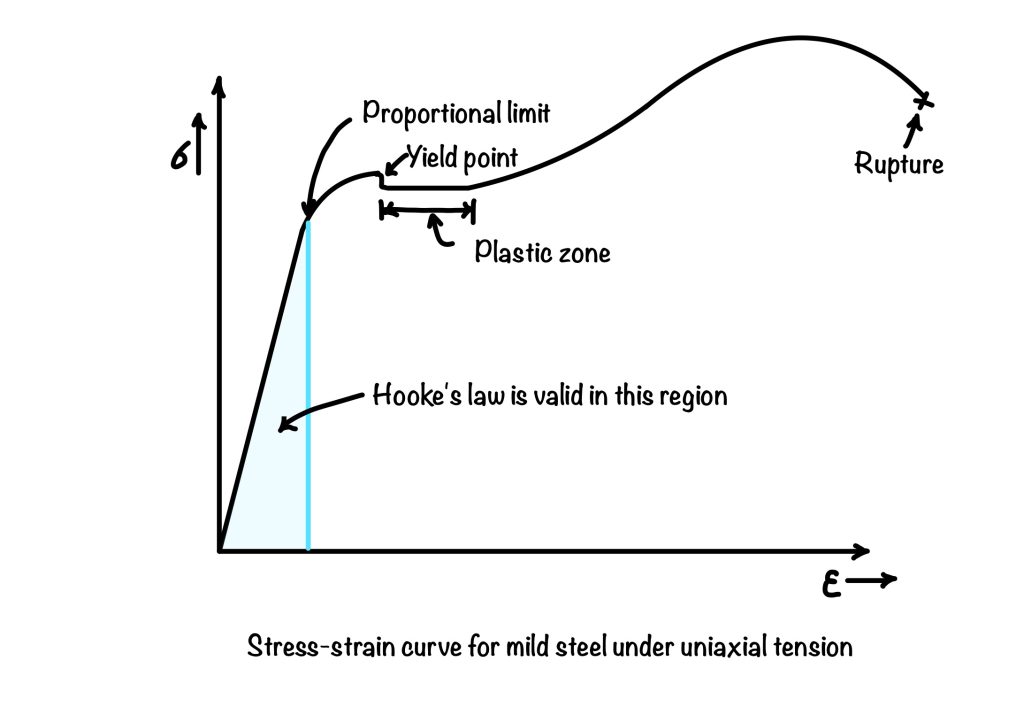Did you know that having a solid grasp of steel’s physical and mechanical properties is the key to making informed decisions when it comes to selecting the right material and section for your structure? With its remarkable strength – to – weight ratio, steel stands head and shoulders above other building materials capable of creating structures that are both strong and light weight.

What are the physical properties of steel?
Physical properties are the characteristics of matter that may be observed and measured. However, the measurement of a physical property may change the position of matter in a sample but not the structure of its molecules.
Some of the physical properties of steel as per IS 800 : 2007 are as follows:
- Unit mass of steel: Density is the mass per unit volume. We require this property to find the dead load of the member. The density of steel is; $\rho = 7850 \;kg/m^3$
- Modulus of elasticity: The Elastic Modulus is the measure of the stiffness of a material. The value of steel is; $E = 2.0 \times 10^5 \;N/mm^2$
- Poisson ratio: Poisson’s ratio measures the deformation in the material in a direction perpendicular to the direction of the applied force. Poisson’s ratio of steel is; $\mu=0.3$
- Modulus of rigidity: The modulus of rigidity shows the beam’s torsion capacity; i.e., the more rigidity, the more the torsion carrying capacity. The modulus of rigidity of steel is; $G=0.769\times10^5\;N/mm^2$.
- Coefficient of thermal expansion: This describes how the size of an object changes with a change in temperature. The coeff. of thermal expansion for steel is; $\alpha=12\times10^6\;/^{\circ}C$.
What are the mechanical properties of steel?
The mechanical properties of steel describe how the material will behave and respond when subjected to loads and forces.
Some of the mechanical properties of steel are as follows:
- Ultimate strength or tensile strength: Ultimate strength is the minimum tensile strength at which the steel would fail.
- Ductility: The ability of a material to deform by bending, twisting, or stretching without failure. The ductility of a structure or its member is the capacity to deform without significant loss of strength.
- Toughness: It is the ability of a material to resist impact without breaking.
- High-temperature effects: Steel is not a flammable material. However, its strength reduces with the rise in temperature.
- Hardness: The ability of a material to resist indentation, scratching, and wear
- Fatigue resistance: Initiation of cracks in a material due to cyclic loading. Fatigue failure is a failure type when a material is expose to repeated cycles of stress or strain and occurs even at lower stress than the yield stress.
Conclusions
In conclusion, steel is an important material used in construction and has various properties that affect its behavior and response when exposed to loads and forces.
In this post, you learned the following key points:
- Physical properties: The physical properties of steel include its unit mass (density), modulus of elasticity, Poisson ratio, and coefficient of thermal expansion.
- Mechanical properties: The properties of steel include its ultimate strength, ductility, toughness, high – temperature effects, hardness, and fatigue resistance.
- Importance: Understanding these properties is a basic step to analyze and design steel structures. So it helps to select the appropriate material and for a given structure.
This article was crafted by a group of experts at eigenplus to ensure it adheres to our strict quality standards. The individuals who contributed to this article are:
Author

Sivraj
M.Tech
He is a research scholar working to get a doctorate in structural engineering.

